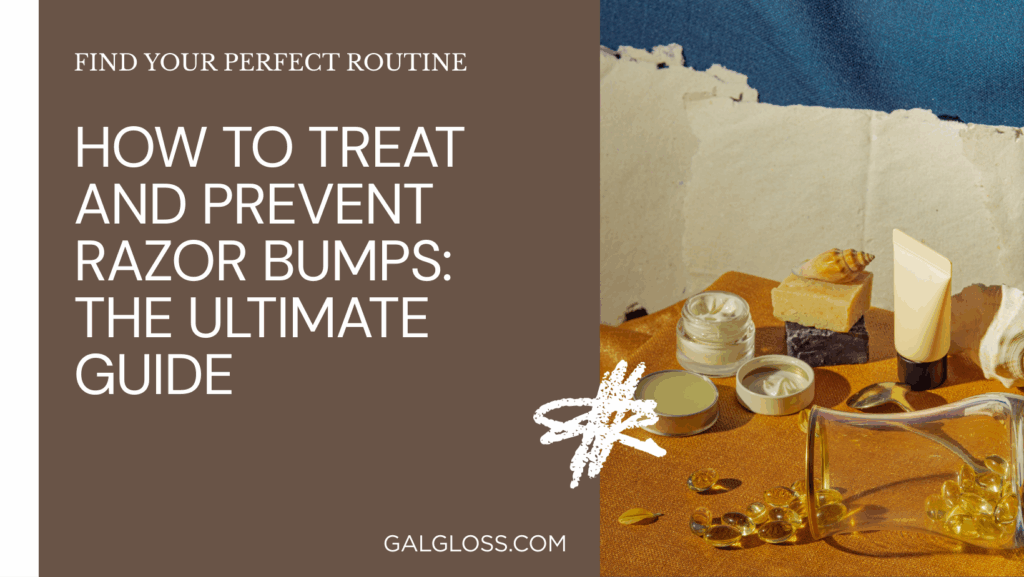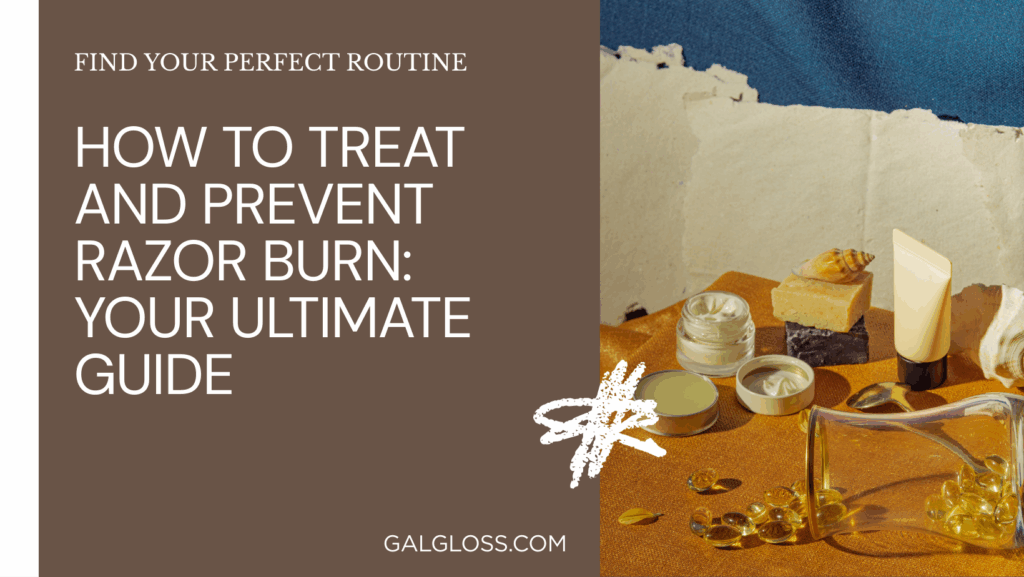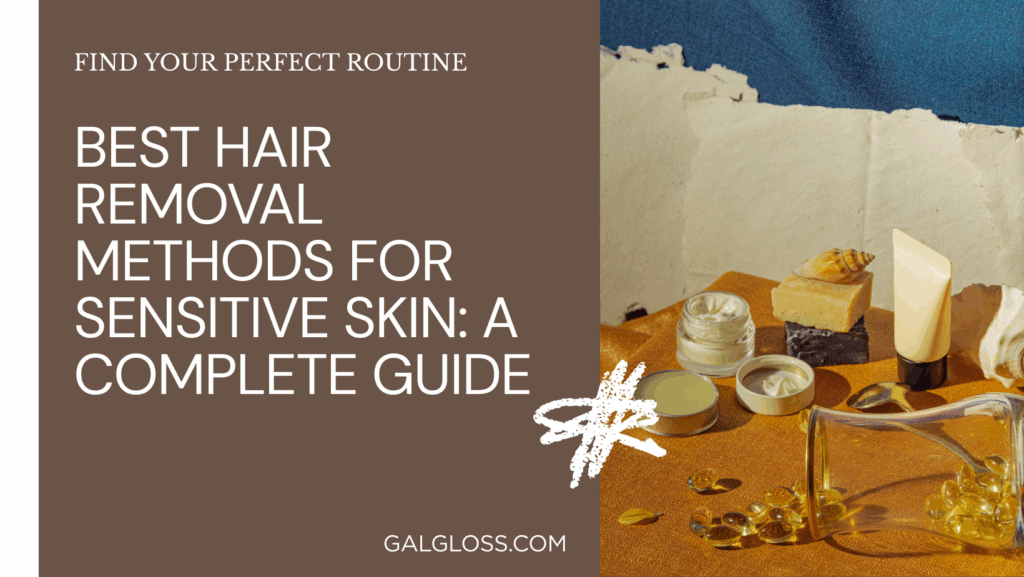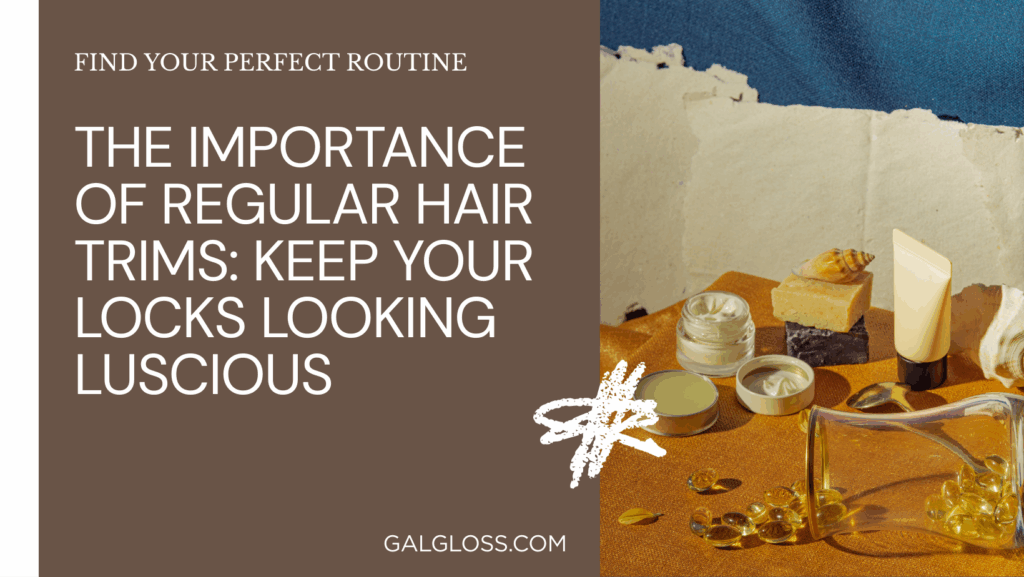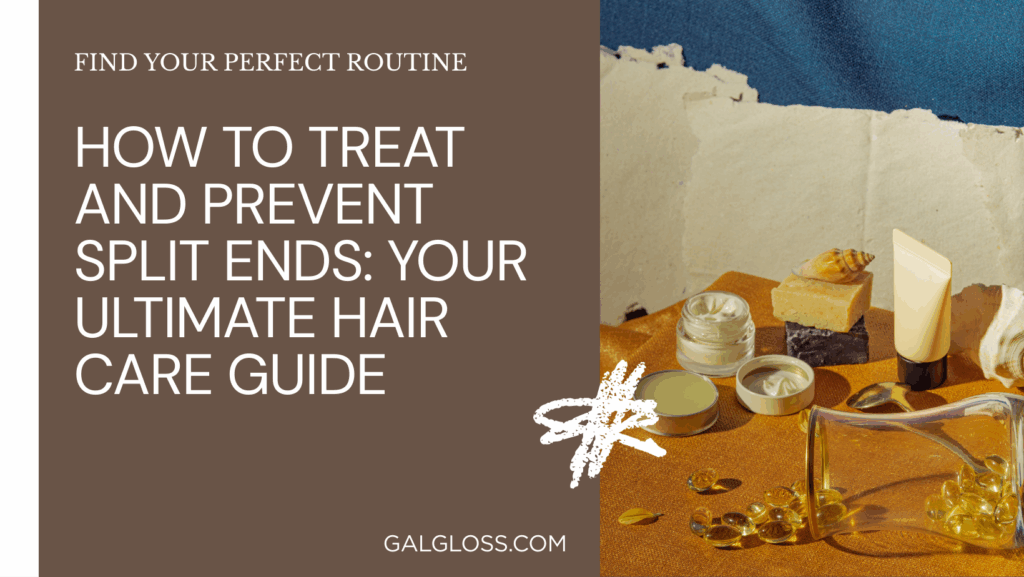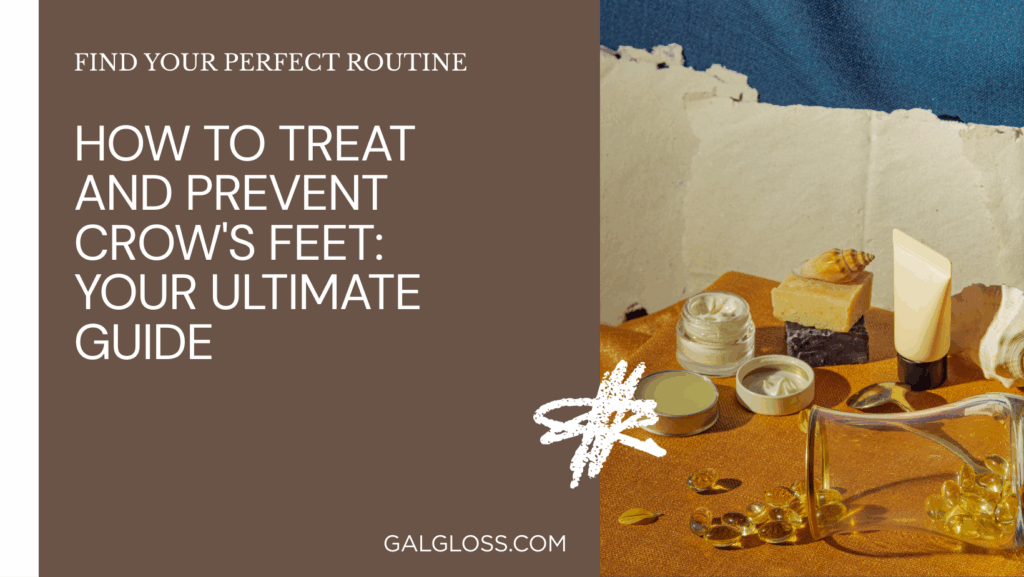Ever felt that annoying, sometimes painful bump after shaving or waxing? Chances are, you’ve run into an ingrown hair. They’re like uninvited guests at a party – nobody wants them, but they show up anyway. But don’t worry, I’ve got your back! In this guide, we’ll dive into the nitty-gritty of treating and preventing these pesky little troublemakers.
Understanding Ingrown Hairs: The Root of the Problem
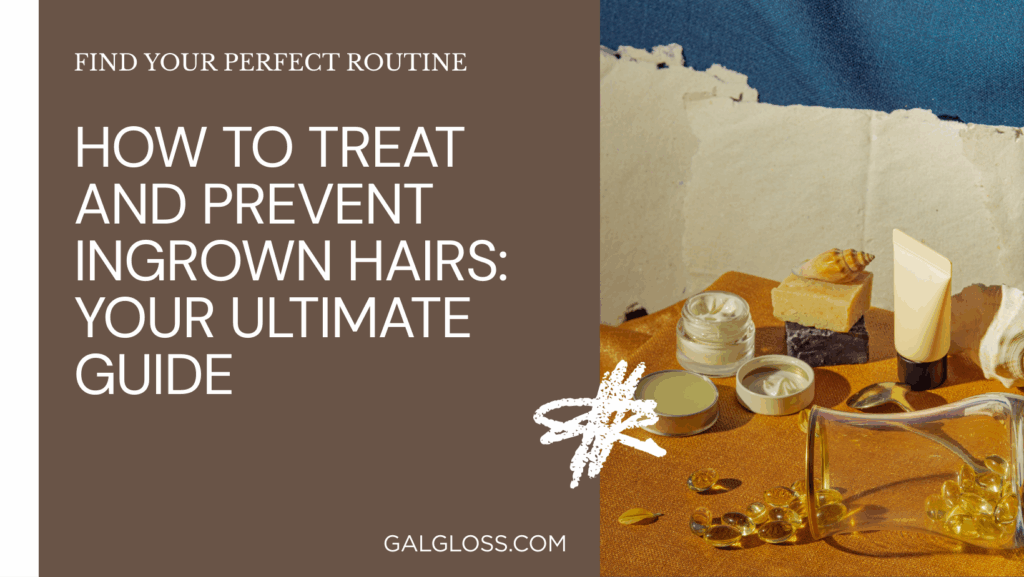
Ingrown hairs are like rebels without a cause. Instead of growing up and out of your skin like they’re supposed to, they curl back in or grow sideways. It’s like they’re trying to hide from the world, but in doing so, they cause all sorts of problems.
Who’s at Risk?
Here’s the kicker – anyone can get ingrown hairs, but some folks are more prone than others. If you’ve got curly or coarse hair, you’re more likely to be on the ingrown hair hit list. Why? Your hair’s natural curl makes it easier for it to grow back into the skin. People with high levels of certain hormones might also find themselves battling these bumps more often.
The Usual Suspects: Common Areas Affected
Ingrown hairs love to party in areas where we regularly remove hair. The most common hotspots include:
- Legs
- Bikini line
- Face (especially for men with curly beards)
- Underarms
- Back
- Chest
Spotting the Troublemakers: Identifying Ingrown Hairs
So, how do you know if you’ve got an ingrown hair? Here are the telltale signs:
- Small, round, solid bumps (also called papules)
- Pus-filled, blister-like lesions (pustules)
- Skin darkening
- Pain or tenderness around the area
- Itching
- Small, rounded, or oval patches with a tan or red color
But hold up! Not every bump is an ingrown hair. Sometimes, these symptoms can be confused with other skin conditions like folliculitis or even acne. If you’re unsure, or if the problem persists, it’s always best to check with a dermatologist. After all, your skin deserves expert care!
Treating Existing Ingrown Hairs: Battle Plan
Now that we’ve identified the enemy, it’s time to fight back. Here’s your arsenal for dealing with existing ingrown hairs:
1. Gentle Exfoliation: The First Line of Defense
Think of exfoliation as clearing the path for your hair. By removing dead skin cells, you’re making it easier for the hair to break through the surface. But remember, gentle is the key word here!
Try this: Mix a tablespoon of sugar with a few drops of olive oil or honey. Gently rub this mixture on the affected area in circular motions, then rinse off. Do this once or twice a week, not every day – we don’t want to irritate your skin further!
2. Warm Compresses: Soothing Relief
Warm compresses are like a spa day for your ingrown hairs. They help soothe the area and can encourage the hair to come to the surface. Simply soak a clean washcloth in warm water, wring it out, and apply it to the affected area for 10-15 minutes. Repeat this a few times a day for best results.
3. Topical Treatments: The Big Guns
There are several over-the-counter products that can help with ingrown hairs:
- Salicylic acid: This beta-hydroxy acid (BHA) helps exfoliate the skin and reduce inflammation.
- Glycolic acid: An alpha-hydroxy acid (AHA) that helps remove dead skin cells.
- Tea tree oil: Known for its antibacterial properties, it can help prevent infection.
Remember to patch test any new product before applying it to a larger area!
4. Removal Techniques: Handle with Care
If you can see the hair loop, you might be tempted to tweeze it out. But hold your horses! Improper removal can lead to infection or scarring. If you must remove it, follow these steps:
- Sterilize a pair of tweezers with rubbing alcohol.
- Gently tease out the end of the hair using the tweezers.
- Don’t pluck the hair out completely – this can lead to another ingrown hair.
- Apply an antibiotic ointment to the area after.
If the hair is deep or the area looks infected, leave it alone and see a healthcare professional.
Preventing Future Ingrown Hairs: An Ounce of Prevention
Now that we’ve dealt with the current crop of ingrown hairs, let’s talk about keeping them from coming back. Prevention is the name of the game!
1. Proper Shaving Techniques: The Art of the Razor
Shaving is often the culprit behind ingrown hairs, so let’s make sure we’re doing it right:
- Always use a sharp razor. Dull blades are more likely to cause irritation.
- Shave in the direction of hair growth. Going against the grain might give a closer shave, but it also increases the risk of ingrown hairs.
- Don’t stretch your skin while shaving. This can cause the just-cut hair to draw back into the skin and become ingrown.
- Rinse the blade after every stroke to keep it clean.
- Apply a moisturizing aftershave to soothe the skin.
2. Alternative Hair Removal Methods: Exploring Options
If shaving is causing you grief, it might be time to explore other hair removal methods:
- Depilatory creams: These dissolve the hair at the surface of the skin.
- Waxing or sugaring: These remove hair from the root, which can lead to slower regrowth.
- Laser hair removal: A more permanent solution that targets the hair follicle.
- Electrolysis: Another permanent option that destroys the hair follicle with electric current.
Each method has its pros and cons, so do your research to find what works best for you.
3. Exfoliation Routines: Keeping the Path Clear
Regular exfoliation can help prevent ingrown hairs by removing dead skin cells that can trap hair. Here are some options:
- Physical exfoliants: Scrubs, loofahs, or exfoliating gloves
- Chemical exfoliants: Products containing salicylic acid or glycolic acid
Remember, exfoliation should be gentle and not done too frequently. Over-exfoliating can irritate your skin and make the problem worse.
4. Moisturizing Practices: Hydration is Key
Well-moisturized skin is less likely to trap hairs. Apply a non-comedogenic moisturizer daily, especially after hair removal. Look for ingredients like aloe vera, which can soothe the skin, or tea tree oil, which has antibacterial properties.
5. Clothing Choices: Let Your Skin Breathe
Tight clothing can push hair back into the skin, especially in areas prone to friction. Opt for loose-fitting, breathable fabrics when possible. This is especially important right after hair removal and in hot, humid weather.
Natural Remedies for Ingrown Hairs: Mother Nature’s Medicine Cabinet
If you prefer a more natural approach, there are several home remedies that can help with ingrown hairs:
- Tea tree oil: Mix a few drops with a carrier oil (like coconut oil) and apply to the affected area. Its antibacterial properties can help prevent infection.
- Aloe vera: The gel from this plant can soothe irritated skin and reduce inflammation.
- Apple cider vinegar: Its acidic nature can help exfoliate the skin. Mix equal parts water and apple cider vinegar, apply with a cotton ball, let sit for a few minutes, then rinse off.
- Sugar scrubs: Mix sugar with olive oil or honey for a gentle, natural exfoliant.
Remember, even natural remedies can cause skin reactions in some people. Always do a patch test first!
Products to Help with Ingrown Hairs: Shopping List
While there’s no magic bullet for ingrown hairs, certain products can definitely help:
- Exfoliators: Look for scrubs with small, round particles. Avoid anything too harsh or jagged.
- Lotions and creams: Products containing salicylic acid, glycolic acid, or alpha-hydroxy acids can help prevent ingrown hairs.
- Ingrown hair serums: These specialized products often contain a mix of exfoliating and soothing ingredients.
- Tweezers and extraction tools: If you’re going to remove ingrown hairs yourself, invest in high-quality, sterilizable tools.
Remember, what works for one person might not work for another. Don’t be afraid to try different products until you find what works best for your skin.
Conclusion: Smooth Sailing Ahead
Dealing with ingrown hairs can feel like an uphill battle, but armed with the right knowledge and tools, you can keep your skin smooth and bump-free. Remember, prevention is key – proper hair removal techniques, regular exfoliation, and keeping your skin moisturized can go a long way in warding off these pesky invaders.
If you do find yourself with an ingrown hair, don’t panic. Treat it gently, avoid the urge to pick or squeeze, and give it time to heal. And if you’re ever in doubt, or if an ingrown hair seems infected, don’t hesitate to seek professional help.
Here’s to smooth, happy skin and saying goodbye to ingrown hairs for good!
